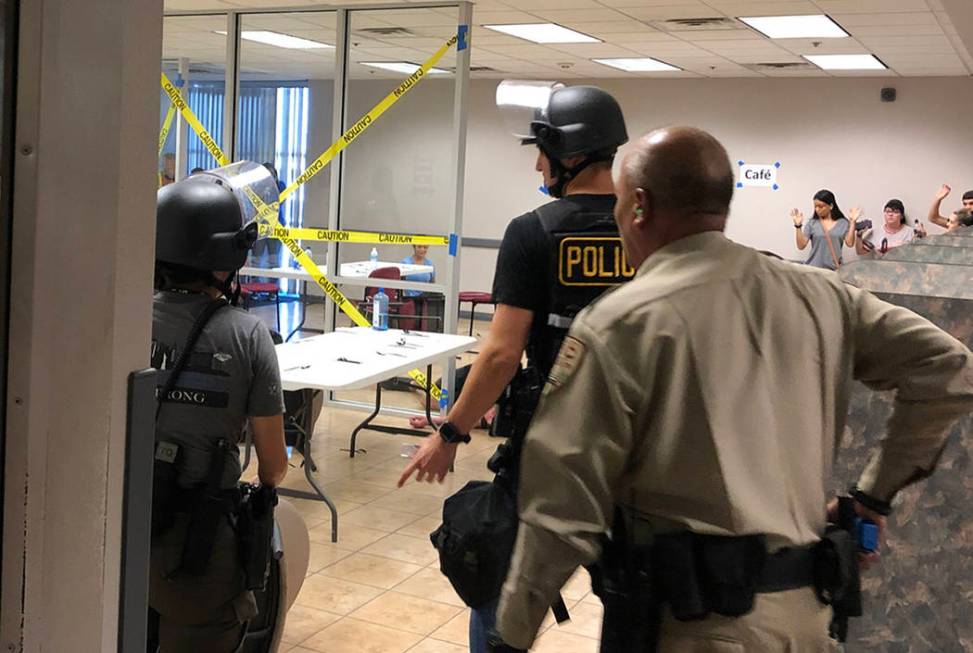Las Vegas police, UMC conduct active shooter training event

Blank rounds shot from a rifle echoed Saturday afternoon as fake victims screamed and police responded to a vacant medical clinic not far from downtown Las Vegas.
It was all part of an active-shooter drill. The training exercise was the first University Medical Center has held with Metropolitan Police Department officers since the 2017 Route 91 Harvest festival mass shooting, said Louis Lepera, the hospital’s director of public safety.
Hospital staff and Metro officers used an unoccupied medical building to practice finding and taking down an active shooter, while navigating volunteers posing as gunshot-wound victims.
“We try to do one every two to three years,” Lepera said about the drill. “Our biggest test that we want to test during these drills is, of course, our communication skills with our local law enforcement.”
In the hours following the October 2017 tragedy that killed 58 people and wounded hundreds more, UMC faced communication issues. At one point a radio dispatch falsely told emergency responders that the hospital, which has the only Level 1 trauma unit in Nevada, had run out of space for those injured.
Lepera said the public safety department “learned a lot” from the shooting, when “there was a lot of miscommunication going around.” He said Saturday’s exercise would give current employees practice working together in the event of a future tragedy.
“We’ll find out where our problems are, what we can do better and what we need to do better,” he said.
Metro officer Gregory Anton, who helped run the drill, said it was designed to simulate an active shooter in a large building with many people inside.
“When we’re going into a building with a lot of people, we have to handle the threat and we have to handle the approach a lot more differently.”
Before the drill, Anton addressed the volunteer victims and told them to act as realistically as possible. He told the crowd, some painted with red paint, others with fake bones poking from underneath clothes, to try to distract officers who need to be prepared for real-life scenarios.
Outside of the building, Anton said the skills practiced during the exercise are tactics officers learn at the academy level. But after the 2017 shooting, officers have been going through longer active-shooter drills more often.
“The unfortunate part is that an active assailant is one of those things where it’s becoming too common,” he said. “The world is changing, dynamics are changing, threats are changing and we need to be prepared for what we’re going into.”
Contact Katelyn Newberg at knewberg@reviewjournal.com or 702-383-0240. Follow @k_newberg on Twitter.